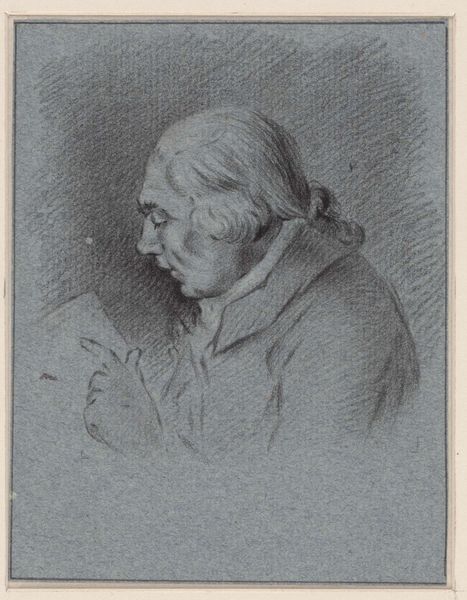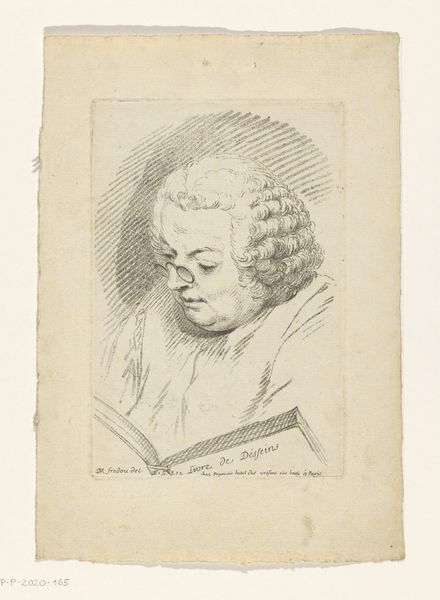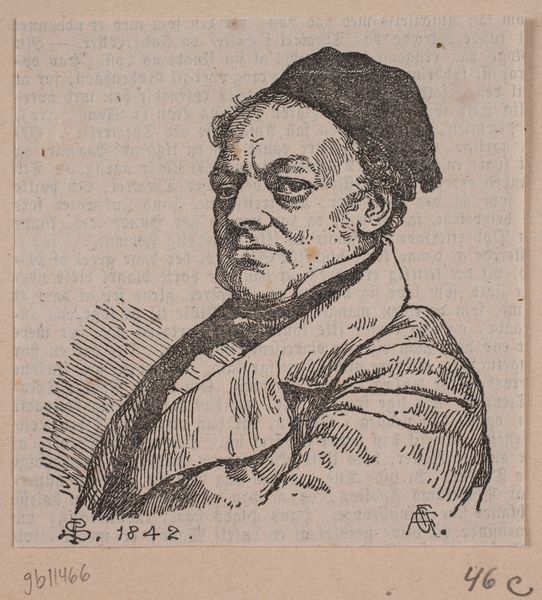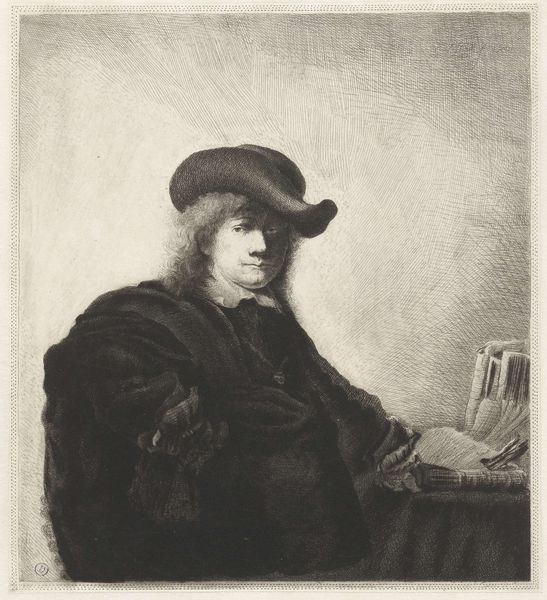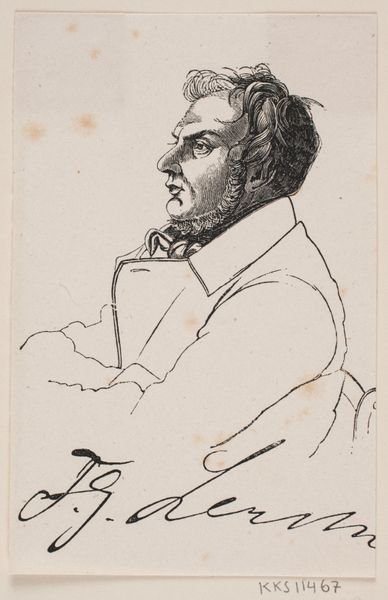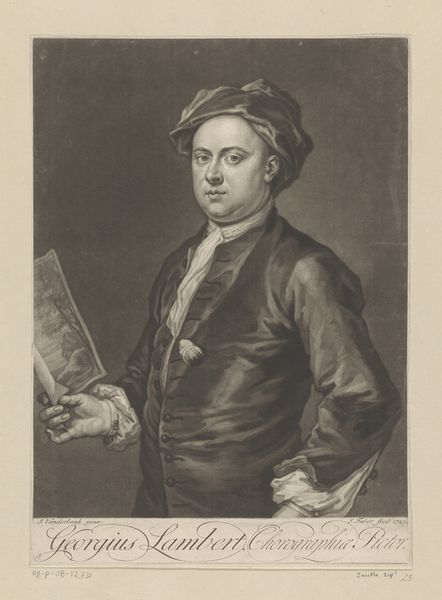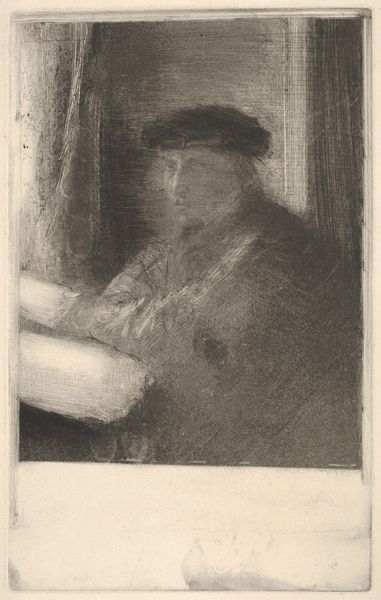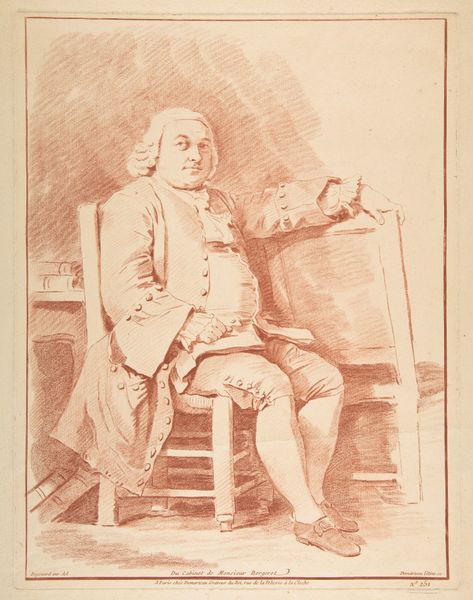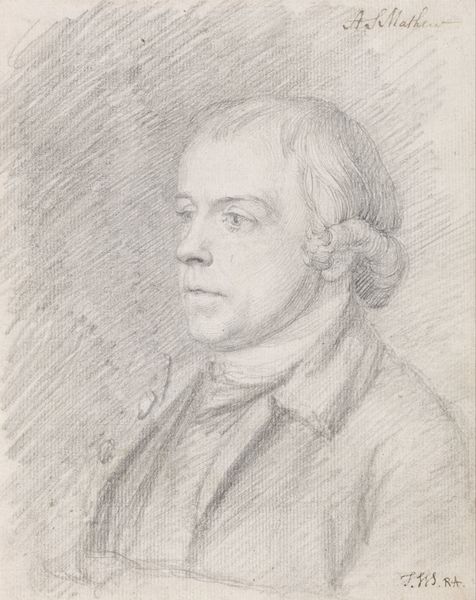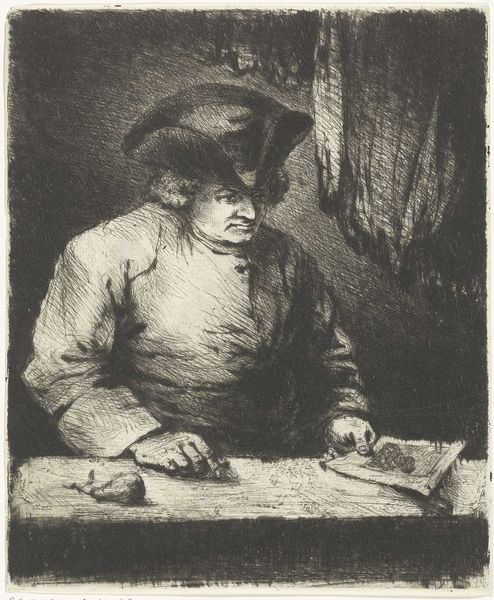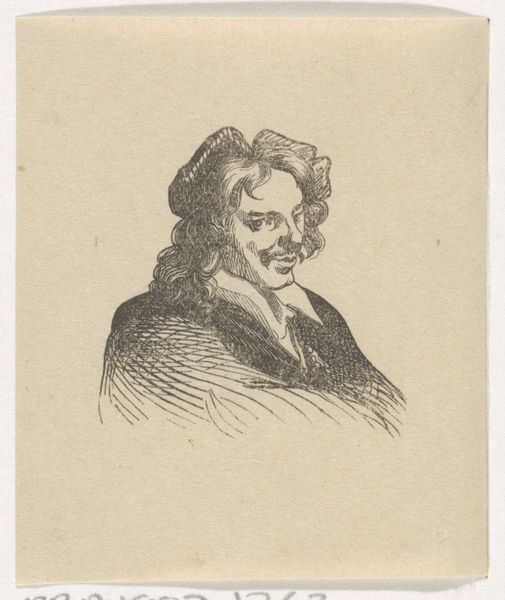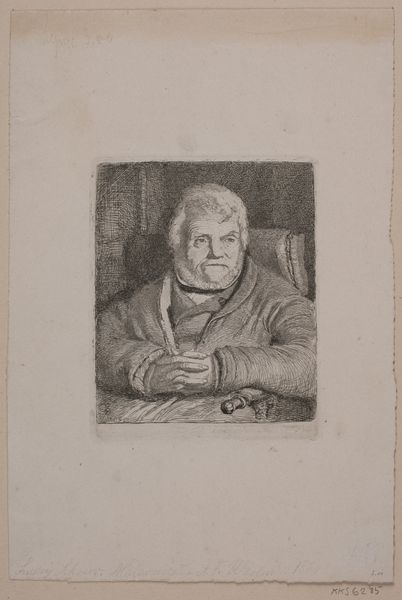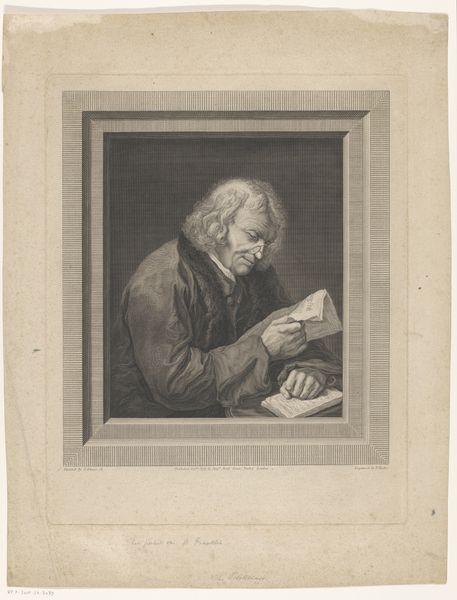
Mr. John Campbell, Precenter in Cannongate Church 1779 - 1789
0:00
0:00
drawing, print, etching, engraving
#
portrait
#
drawing
# print
#
etching
#
portrait drawing
#
engraving
Dimensions: sheet: 2 15/16 x 2 1/16 in. (7.4 x 5.3 cm)
Copyright: Public Domain
Curator: Looking at this etching, "Mr. John Campbell, Precenter in Cannongate Church," dating from around 1779 to 1789, by John Kay, what strikes you first? Editor: There's a surprising immediacy about it, almost like a candid snapshot despite being an etching. I see the somewhat bulbous silhouette against the dark ground, with what appears to be a songbook in his hand. What does it convey? Curator: Kay was a keen observer of Edinburgh society. Precenters led the congregation in song, and this piece probably satirizes or pokes gentle fun at Campbell's public role. This work sheds light on the performative aspect of religious life in that period. Editor: Absolutely. He embodies, in that puffed cheek and uplifted gaze, that idea. That open book—clearly of utmost importance—isn’t just text, but an embodiment of cultural power and religious custom. The delicate ruff at his wrists, the intricate scarf…it's a world of symbolism contained in these fine lines. Curator: Kay created numerous such portraits of Edinburgh figures, sold as prints, effectively creating a visual record of the city’s notables. They offer a glimpse into the class structures and social expectations of the time. The details, like his somewhat outdated hairstyle, speak to his specific social standing. Editor: The details! The etching gives such volume through its linear precision, bringing life to otherwise obscure symbols, and even giving voice to them, no pun intended! This book acts almost like an appendage here, something necessary for his social and religious symbolism. Curator: It's a fascinating study in how images cement historical narratives. Kay's print immortalizes Campbell but also offers a commentary on the broader social milieu of 18th-century Edinburgh. Editor: Indeed. One gets the sense that these printed images contributed not only to a visual understanding, but also helped craft the socio-political identity of the sitter. Curator: I leave now this etching reflecting on the power of image and representation in historical memory. Editor: And with that thought, my imagination sparks anew regarding art’s impact and lasting echo in our lives.
Comments
No comments
Be the first to comment and join the conversation on the ultimate creative platform.
